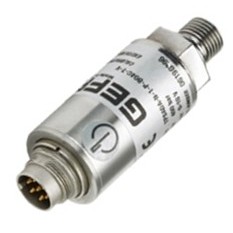 This guide provides information on the types of voltage output pressure transducers you can use, and how to choose the right output signal for your application.
This guide provides information on the types of voltage output pressure transducers you can use, and how to choose the right output signal for your application.
Voltage output pressure transducers have built in signal amplifiers which boost the low level signal produced by the transducer sensing element. There are many types of voltage outputs to suit the preference of a particular industry standard and voltage signal conditioning systems.
Products
Select a type of voltage output pressure transducer from the list below to view product specification details and request a price quotation.
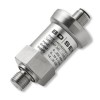 Suction Pressure Transducers
Suction Pressure Transducers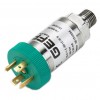 0-10 Volts Output Pressure Transducers
0-10 Volts Output Pressure Transducers 0-5 Volts Output Pressure Transducers
0-5 Volts Output Pressure Transducers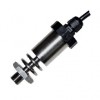 Steam Pressure Transducers
Steam Pressure Transducers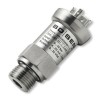 Vacuum Pressure Transducers
Vacuum Pressure Transducers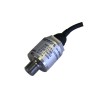 Ratiometric 0.5-4.5 Volts Output Pressure Transducers
Ratiometric 0.5-4.5 Volts Output Pressure Transducers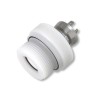 Hydrostatic Liquid Level Voltage Output Pressure Transducers
Hydrostatic Liquid Level Voltage Output Pressure Transducers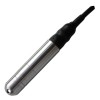 IP68 Submersible Protected Voltage Output Signal Pressure Transducers
IP68 Submersible Protected Voltage Output Signal Pressure Transducers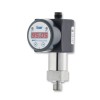 Pressure Indicator Transducers
Pressure Indicator Transducers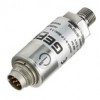 Hydraulic Analog Voltage Signal Pressure Transducers
Hydraulic Analog Voltage Signal Pressure Transducers High Resolution Pressure Transducers
High Resolution Pressure Transducers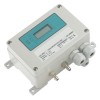 Differential Pressure Voltage Output Transducers
Differential Pressure Voltage Output Transducers 1-5 Volts Output Pressure Transducers
1-5 Volts Output Pressure Transducers
Description
For long cable runs of 10’s or 100’s of metres it is necessary to select a high level voltage signal or a pressure transducer which is not going to be easily corrupted or diminish over a long distance.
An amplified voltage output is much more robust than a millivolt output signal and can be used over mediums distances without any noticeable signal losses. It is also relatively low powered, consuming only a few milliamps which is ideal for conserving power consumption over longer distances of cable run.
Amplified voltage output levels are mostly available as 3 wire configurations with a common connection for the negative supply and negative output. Some manufacturers split the negative connection to make a 4 wire configuration but the supply and output negative are still connected internally so they are principally the same as 3 wire configurations.
It is possible to get a true 4 wire configuration where the 2 output signal wires are completely isolated from the 2 supply wires but these are becoming less common due to the added manufacturing costs of the circuit and lack of demand for output signal isolation.
There is a plethora of signal types which have an amplified voltage output and some of the most common are 0 to 5, 0 to 10, 1 to 5 and 1 to 10 volts. The outputs are generally powered by a regulated DC circuitry so that a range of supply voltages can be used without any significant impact on the output signal. The choice of amplified voltage output is mainly driven by maximising the available bit resolution of the digital to analogue converter (DAC) which is going to be measuring the output signal.
Some pressure transducers have the option for a AC supply and these are true 4 wire configurations with an isolated output signal. For automotive applications the 0.5 – 4.5 Vdc ratiometric output is a very popular signal type because it is relatively low powered since it can produce a high level signal with just a 5 volt dc supply.
Choose a voltage output pressure transducer
Pressure Transducers with voltage outputs for gauge, absolute & differential pressure sensing where a high level voltage output is required.
If you would like us to select a voltage output pressure transducer for you, then please use this form to specify your requirements.
Voltage output type
Choose the voltage output type required to select a pressure transducer.
Low range pressure
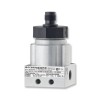 Low range amplified voltage output pressure transducers for measuring gauge, absolute and differential pressures below 1 bar (15 psi, 400 inWG, 1000 mbar or 30 inHg).
Low range amplified voltage output pressure transducers for measuring gauge, absolute and differential pressures below 1 bar (15 psi, 400 inWG, 1000 mbar or 30 inHg).
- Gauge reference range (Air)
- Gauge reference range (Liquids)
- Absolute reference range (Air/Liquids)
- Differential pressure range (Dry/Dry)
- Differential pressure range (Wet/Wet)
High range pressure
 High range pressure transducers with high volts output signal for measuring hydraulic pressures.
High range pressure transducers with high volts output signal for measuring hydraulic pressures.
Low powered ratiometric
Ratiometric voltage output pressure transducer with a 0.5 to 4.5 volt signal which is proportional to the nominal input supply voltage of 5 volt dc. Primarily used in automotive and motorsport applications this type of amplified output pressure sensor can be used in any application requiring high output signal with low input supply voltage.
with a 0.5 to 4.5 volt signal which is proportional to the nominal input supply voltage of 5 volt dc. Primarily used in automotive and motorsport applications this type of amplified output pressure sensor can be used in any application requiring high output signal with low input supply voltage.
Low range differential pressure
Low pressure range dp transducers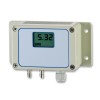 for measuring draft pressures in ventilation systems or air extraction systems. This transducer has two ports for connecting either side of a ventilation fan, filter or valve. Applications include building management systems, industrial air handling, clean room positive pressure and air scrubbing.
for measuring draft pressures in ventilation systems or air extraction systems. This transducer has two ports for connecting either side of a ventilation fan, filter or valve. Applications include building management systems, industrial air handling, clean room positive pressure and air scrubbing.
Wet Wet differential pressure
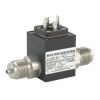 Wet wet amplified voltage signal pressure transducer which has components that are suitable for use with fluids on both process connection ports.
Wet wet amplified voltage signal pressure transducer which has components that are suitable for use with fluids on both process connection ports.
Miniature size
Small diameter and short length pressure transducer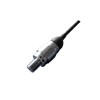 with amplified voltage output. These small size, lightweight pressure transducers are designed for motorsport and research applications which have tight controls on additional weight and size or have limited space to install the transducer.
with amplified voltage output. These small size, lightweight pressure transducers are designed for motorsport and research applications which have tight controls on additional weight and size or have limited space to install the transducer.
High precision
High precision pressure transducer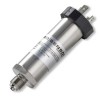 with an analog voltage output for detecting very small changes in pressure or measuring pressure to a high precision. Typically a 16 bit digital amplifier is utilised to provide a high resolution output to make the most of the available resolution from analog to digital converters in data acquisition cards and other ADC instrumentation devices.
with an analog voltage output for detecting very small changes in pressure or measuring pressure to a high precision. Typically a 16 bit digital amplifier is utilised to provide a high resolution output to make the most of the available resolution from analog to digital converters in data acquisition cards and other ADC instrumentation devices.
Atmospheric pressure
Atmospheric pressure transducer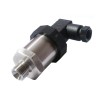 which converts the measured local air pressure to a conditioned analogue voltage output. To fully utilise the available resolution of your measurement instrumentation the voltage output signal is scaled over the minimum and maximum expected atmospheric pressure such as 800 to 1200 mbar absolute. For applications requiring a global or more extreme range such as high altitude testing in climatic chambers it is possible to provide custom ranges such as 500 to 1100 mbar absolute.
which converts the measured local air pressure to a conditioned analogue voltage output. To fully utilise the available resolution of your measurement instrumentation the voltage output signal is scaled over the minimum and maximum expected atmospheric pressure such as 800 to 1200 mbar absolute. For applications requiring a global or more extreme range such as high altitude testing in climatic chambers it is possible to provide custom ranges such as 500 to 1100 mbar absolute.
High temperature
 Convert the pressure of high temp media to voltage output with these transducers. High temperatures can be reduced by integrating a section of the process connection that allows the process media temperature to dissipate into the surrounding environment before it reaches the heat sensitive components of the transducer. In some applications the ambient air is also at a high temperature and in these cases the whole pressure transducer including the electronics must be able to withstand the heat.
Convert the pressure of high temp media to voltage output with these transducers. High temperatures can be reduced by integrating a section of the process connection that allows the process media temperature to dissipate into the surrounding environment before it reaches the heat sensitive components of the transducer. In some applications the ambient air is also at a high temperature and in these cases the whole pressure transducer including the electronics must be able to withstand the heat.
Sanitary/Hygienic
All stainless steel voltage output pressure transducer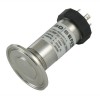 for sanitary applications such as monitoring food, brewing, medicine and dairy production processes. Sanitary processes require all materials exposed to the product to be 316 stainless steel with exposed surfaces to discourage build up of bacteria and ease cleaning, and if fluids are incorporated into the transducer design they should be non-harmful to humans if ingested.
for sanitary applications such as monitoring food, brewing, medicine and dairy production processes. Sanitary processes require all materials exposed to the product to be 316 stainless steel with exposed surfaces to discourage build up of bacteria and ease cleaning, and if fluids are incorporated into the transducer design they should be non-harmful to humans if ingested.
Flush diaphragm
Flush fitting pressure transducer with high level voltage outputs and exposed diaphragms for use with media which has a high viscosity.
with high level voltage outputs and exposed diaphragms for use with media which has a high viscosity.
Related Help Guides
- What is the difference between a pressure transducer and a transmitter
- How to create a list of specification parameters for a pressure sensor
- Checking the LHR error of a 0-5 Vdc output pressure transducer
